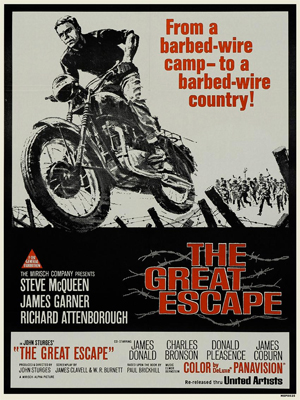
Title: Violence, discipline and leisure: Sport in penal and internment camps
Location: Cologne, Germany
Date: 23-25 September 2015
Deadline: 31 July 2014
Organizers: Prof. Dr. Dittmar Dahlmann, Universität Bonn, Dr. Anke Hilbrenner, Universität Bonn, Gregor Feindt, M.A., Institut of European History, Mainz
When the camp commander detected any violation of camp discipline, he would torture us with senseless and malicious punishments which he called ‘sport.’ For up to an hour we were forced to run around the camp, sometimes crawling, sometimes huddled together, while Germans, wearing bright green and red, randomly beat us with canes.
In these words an unknown former camp inmate described the brutality of sport in Nazi concentration camps. Sport under the specific circumstances of repression, hunger, violence, and killing unsettles most observers. It goes without saying, that sport in such or other pe nal and internment camps as something coercive that must constitute a part of the repressive system.
However, sport in camps was not always forced upon prisoners but often exercise and play were taken up by the prisoners voluntarily. Under these circumstances sport enabled camp inmates to ensure their survival, organise themselves and to some degree express their identity. Although sport added to malnutrition, forced labour, and torture thus meaning further exhaustion it became an object of self-dependence and self-reliance.
This makes sport in camps a twofold phenomenon. On the one hand exercise was a method of violence and a way for guards to torture prisoners. It also served as entertainment for camp officials. On the other side prisoners participated in such sporting activities on their own initiative. Camp inmates took up sport or watched others competing simply because they wanted to and in some cases were able to do so.
The fact that people participated in sport under such murderous and brutal circumstances in penal and internment camps often provoked and provokes disbelieve and repulsion. Apparently, the tension between life and death is especially shocking when it comes to sport. Therefore, sport is often used as a metaphor for the incapability to describe Auschwitz. Tadeusz Borowski for instance made use of this image in his book “This way for the gas, ladies and gentleman” when a football goalkeeper commented: “Between two throw-ins in a soccer game, right behind my back, three thousand people had been put to death.” Still Primo Levi understood football matches as a metaphor of collaboration and guilt, generally being connected with survivors of concentration camps.
With our conference we approach the historic reality of sport in camps beyond alienation and metaphors. We will thus scrutinise sport as both a tool of repression and strategy of survival in a broad and comparative perspective. In order to tackle the dyn amic of sport in penal and internement camps we will take into account different camp systems, periods of time and geographical regions. We welcome contributions for example on Nazi concentration camps and the Soviet GULag, but also on PoW-Camps during the World Wars, DP-Camps after 1945, and refugee camps throughout the 20th century. Biographical studies will possibly add a perspective of continuity between different camps. Finally we will discuss memory and historic interpretation of sport in camps.
Prospective contributions may address one of the following questions, but are not limited to these:
- How did sport occur in penal and internment camps? What was the reason of introducing sport in camps and who contributed to this development?
- What was the role of sport in the camps’ everyday life?
- Who was taking exercise and participated in sport (prisoners, guards, or camp superiors)?
- Which role did sport play in the system of repression?
- Which ro le did sport play for the camp inmates themselves?
- Which identities were constructed with the help of sport and how did sport serve as a matter of self-expression?
- Which concepts of body and gender were expressed by sport in camps?
- Which kind of sports was exercised in the camps and why were especially these sports popular?
- What can be said about the performative aspects of sport in camps? Who attended sport events and watched others in their action? Was there any media coverage of such events and what was its function within the camp`
- Did sport establish a zone of contacts between the different levels of hierarchy within a camp? Did sport connect the camp with the outer world?
- How does memory of camp life effect the way we think about sport in camps today? How do these interpretations influence scholarly research on the topic?
We invite proposals for 25-minute papers. Please include into your proposal the paper title, short bio and a brief abstract of no more than 300 words. Please, send your proposal or any queries to a.hilbrenner@uni-bonn.de until July 31, 2014
The conference language is English.








